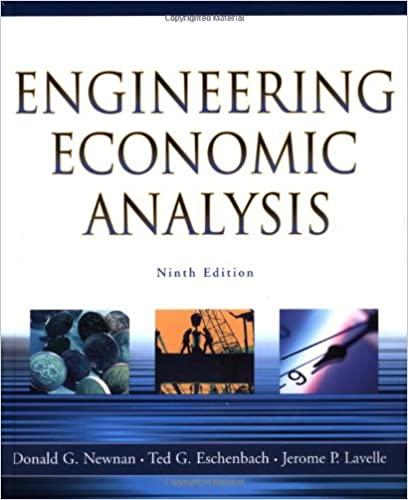A firm manufactures padded shipping bags. One hundred bags are packed in a cardboard carton. At present,
Question:
The management has never received complaints from its customers about cartons containing fewer than 100 bags. Nevertheless, management realizes that they are giving away 51/2% of their output by overfilling the cartons. One solution would be to count the shipping bags to ensure that 100 are packed in each carton. Another solution would be to weigh each filled shipping carton. Underweight cartons would have additional shipping bags added, and overweight cartons would have some shipping bags removed. This would not be a perfect solution because the actual weight of the shipping bags varies slightly. If the weighing is done, it is believed that the average quantity of bags per carton could be reduced to 102, with almost no cartons containing fewer than 100 bags.
The weighing equipment would cost $18,600. The equipment would be depreciated by straight-line depreciation using a l0-year depreciable life and a $3600 salvage value at the end of 10 years. The $18,600 worth of equipment qualifies for a 10% investment tax credit. One person, hired at a cost of $16,000 per year, would be required to operate the weighing equipment and to add or remove padded bags from the cardboard cartons. 200,000 cartons will be ,checked on the weighing equipment each year, with an average removal of 3.5 padded bags per carton with a manufacturing cost of 3 cents per bag. This large profitable corporation has a 50% combined federal-plus-state incremental tax rate. Assume a 10-year study period for the analysis and an after-tax MARR of 20%.
Compute:
(a) The after-tax present worth of this investment.
(b) The after-tax internal rate of return of this investment.
Internal Rate of Return
Internal Rate of Return of IRR is a capital budgeting tool that is used to assess the viability of an investment opportunity. IRR is the true rate of return that a project is capable of generating. It is a metric that tells you about the investment... Salvage Value
Salvage value is the estimated book value of an asset after depreciation is complete, based on what a company expects to receive in exchange for the asset at the end of its useful life. As such, an asset’s estimated salvage value is an important... MARR
Minimum Acceptable Rate of Return (MARR), or hurdle rate is the minimum rate of return on a project a manager or company is willing to accept before starting a project, given its risk and the opportunity cost of forgoing other... Corporation
A Corporation is a legal form of business that is separate from its owner. In other words, a corporation is a business or organization formed by a group of people, and its right and liabilities separate from those of the individuals involved. It may...
Fantastic news! We've Found the answer you've been seeking!
Step by Step Answer:
Related Book For 

Engineering Economic Analysis
ISBN: 9780195168075
9th Edition
Authors: Donald Newnan, Ted Eschanbach, Jerome Lavelle
Question Posted:





